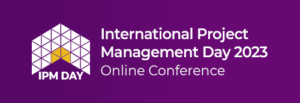By Mark Cruth
August 9, 2023
In the wild world of distributed work, getting your team to collaborate like a well-oiled machine can sometimes feel like a real uphill battle. Picture this: your team is scattered all over the place, some on the other side of the globe, and collaboration and connection issues are running rampant. No one knows what’s going on, everyone is making assumptions about who’s doing what, and the latest team survey shows that people are feeling lonelier than ever before. Leaves you missing those good ol’ days of everyone being in the office, doesn’t it?
Well, here’s a pill that might be hard to swallow… these issues aren’t new. Before the advent of distributed work, teams constantly struggled with collaboration and connection issues….it was simply masked by unintentional office osmosis and awkward conversations at the coffee machine.
Does this mean we’re destined for subpar teamwork forever? Of course not! I’m here to tell you there’s a way to not only unlock but supercharge your teamwork regardless of where everyone is located. When working with teams, I recommend they run these four essential Plays from the Atlassian Team Playbook to help shape how they work as a team:
Create a Team Poster

(Image credit: Atlassian)
While it may sound simple, creating a team poster can be a powerful way to build team cohesion and a shared understanding of what you are trying to achieve. Following the Team Poster Play, work with your team to answer the following questions…
- What problem are we trying to solve?
- Who are our customers?
- How will we measure success?
- What solutions do we offer?
Document the answers to these questions and post them in a central, digital location, like your team’s Confluence or SharePoint home page. This way the team always knows where to go to realign themselves.
Define Roles and Responsibilities

(Image credit: Atlassian)
Clarity in roles and responsibilities is the cornerstone of successful teamwork. In a distributed setting, where face-to-face interactions are limited, it becomes even more critical. Following the Roles and Responsibilities Play, you’ll take the time to thoroughly define each team member’s role and outline their responsibilities, but with a twist! To run the play, you will…
- Brainstorm a list of roles that are on your team (e.g., Project Manager, Copywriter, etc.)
- Next, each team member will spend time defining what they think each role is responsible for, EXCEPT for their own role (there’s the twist!)
- Next, each person should review the responsibilities added to their role and determine if they agree or disagree
- For any responsibilities they disagree with, put those in an “unassigned responsibilities” list and come up with a game plan for assigning those before you end the session
Coming to a shared understanding of the responsibilities of each role will minimize confusion and overlaps. This practice not only streamlines workflows but also fosters a sense of accountability and ownership among team members.
Build a Working Agreement

(Image credit: Atlassian)
The MOST important artifact for a team to possess is a working agreement, which is a set of guidelines that the team collectively agrees upon to govern how they work together. It’s about making those implicit assumptions we have about how we work, explicit! In distributed teams, where diverse work styles and time zones come into play, having a working agreement is critical. The Working Agreements Play is simple to run and is focused on helping your team align on a number of areas, including:
- Individual working styles/preferences (e.g., hours of work, how I like to receive feedback)
- Communication channels (e.g., how do we use tools like email, Slack, and others)
- Meetings and rituals (e.g., what meetings do we have as a team and why)
- Escalation process (e.g., how do we ask for help)
- Continuous improvement (e.g., how do we reflect and improve on a regular basis)
By involving all team members in shaping the working agreement, you foster a feeling of ownership and commitment, as well as a stronger sense of TEAM!
Identify Your Network of Teams

(Image credit: Atlassian)
Unless you’re an organization of 10 people, I’d gamble that your team typically needs help from other teams to accomplish your goals. When we were in the office, we might walk over to that other team’s area for a chit-chat and to make our request, but in a distributed environment we tend to just throw our requests over the wall and hope they get done. To be successful with cross-team work, we must build strong relationships with those teams we frequently interact with. The Network of Teams Play does just that, enabling teams to become more intentional in how they collaborate with others.
- To run the play, you will: Identify all the teams you foresee collaborating with over the next six months
- Classify teams into levels of criticality (e.g., which teams are more critical to your success than others?)
- Of the teams identified as being highly critical, prioritize which team-to-team relationships you want to work on improving
- Assign someone from your team to each identified team in order to start building a better working relationship with them
By proactively reaching out to teams with whom you need to work and with whom you need to have a better relationship, you can prevent unexpected slowdowns in work and the unnecessary drama associated with it.
By incorporating these four plays into your distributed work approach, every team can foster a collaborative, goal-oriented, and connected environment. Building effective teamwork, regardless of whether you’re distributed or in the office, requires intentional effort, but it doesn’t have to be hard. So, what’s stopping you from supercharging your teamwork?
About the Author
Mark Cruth
Focused on practice over theory, Mark is a pragmatic modern work designer and coach. With over a decade of experience experimenting with teamwork practices at places like Boeing, Nordstrom, Charles Schwab, and Rocket Mortgage, Mark’s mission is to inject modern ways of working, a transformation mindset, and the power of expert storytelling into everything he does.
Today Mark works for Atlassian, a company focused on unleashing the potential of every team! Mark spends his days coaching both Atlassian and customer teams on new ways of working, then sharing what he’s learned at events around the world! Learn more about Mark and his work at markcruth.com.

Mark Cruth is a Presenter at this year’s IPM Day 2023! Stay tuned for his presentation on ‘Unleashing the Potential of a Distributed Workforce’.
Disclaimer: The ideas, views, and opinions expressed in this article are those of the author and do not necessarily reflect the views of International Institute for Learning or any entities they represent.



